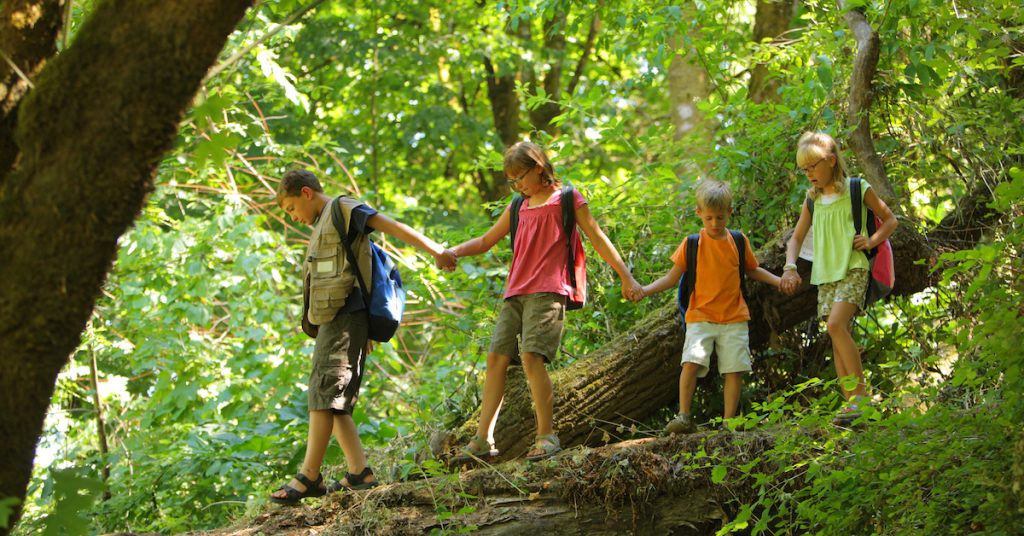
Summer camp is a rite of passage for kids everywhere. Hikes, swimming, canoeing, and other traditional activities are a way for children to develop essential life skills while having wholesome fun. Of course, summer camp is not without risks, ranging from bug bites and insect stings to cuts and minor sprains. Most camps have trained medical personnel on staff; however, it is usually the counselors or parent chaperones who are on the front lines of providing first aid for children who become ill or injured. Every camp counselor and camper who is old enough should know basic first aid for children, and every parent should ensure that a first aid kit is included in their child’s summer camp supplies or that camp counselors have access to one during all activities.
To help parents and campers prepare, FastMed Urgent Care offers the following safety and first aid basics, as well as a handy summer camp first aid kit checklist so that you will be ready for any unexpected emergencies.
Basic First Aid for Children
Bleeding wounds that are minor enough that they can be controlled with a Band-Aid should be cleaned with soap and water, dried, and covered with the Band-Aid. If the wound is large, gaping, jagged, bleeds excessively, or was caused by a dirty or rusty object, it should be evaluated by a healthcare professional to determine if sutures and a tetanus shot are necessary.
Bug bites typically can be treated by applying cold compresses and calamine lotion to the area to stop the itching. In the case of an insect sting, use tweezers, a credit card, or a similar object to remove the stinger before washing the area with soap and water. You should seek immediate medical attention if the individual develops any of the following symptoms of a severe allergic reaction:
- Difficulty breathing
- Swelling of the face, tongue, or throat
- Rapid pulse
- Hives
- Nausea, vomiting, or diarrhea
- Confusion, dizziness, or loss of consciousness
Minor sprains and strains can typically be treated by resting the affected limb, applying ice to reduce pain and inflammation, wrapping the injured limb with compression bandages, and keeping it elevated. If the pain does not improve, you should consult a medical professional to rule out a possible fracture or another serious injury.
If a permanent tooth is knocked out, the best course of action is to place it immediately in a tooth preservation kit, cold milk, or saliva, and visit a dentist as quickly as possible to see if it can be re-implanted. To avoid damaging the tooth, you should NOT attempt to clean the tooth, and should avoid placing the tooth under running water or soaking it in tap water. Be careful to only handle the tooth by the crown since touching the root can cause further damage. Even the loss of a “baby” tooth needs to be followed up by a dentist as soon as possible.
The following situations should always be referred to a healthcare professional as soon as possible:
- A child who is throwing up
- A child who is pale, flushed, or lethargic
- Injuries to the eyes or ear
- A child with a chronic medical condition who complains of feeling ill
First Aid Bag Checklist
A well-stocked first aid kit is essential for any type of camping trip. Purchasing a pre-made first aid kit is the simplest method; however, you can assemble your own kit using the following summer camp first aid kit list:
- Gauze pads and adhesive bandages in a variety of sizes
- Adhesive tape and elastic bandages
- A splint – SAM splints are flat so are easy to pack and can be molded into almost any shape
- Non-latex gloves
- Antiseptic wipes, soap, or alcohol for cleaning wounds
- Basic medications, including calamine lotion, antibacterial ointment, hydrocortisone cream, acetaminophen, ibuprofen, and antihistamines
- Drinking water if you are away from potable water
- A tooth preservation kit
- Tweezers, scissors, and safety pins
- Instant cold packs
- A blanket, sheet, and/or pillowcase (for making slings)
- A roll of Duct Tape
- A flashlight with extra batteries
- A thermometer
- A mouthpiece for administering CPR
- An emergency Mylar Blanket
What to Do Once You Complete Your First Aid Bag Checklist
Once you have assembled all of the items on your summer camp first aid kit checklist, store the items in a durable, waterproof container in a place where it will be readily accessible in the event of an emergency. Be sure to inspect the kit periodically so that you can replace any items that are missing or expired. It is also a good idea to purchase a basic safety and first aid manual, such as those offered by the Red Cross, to keep with the kit so that you or your camper will know exactly what to do in the event of an emergency.
While FastMed can’t help you gather up your child’s summer camp supplies, our providers can take care of your child’s pre-camp physical, as well as make sure that they are current on all vaccinations and immunizations. Schedule an appointment or stop by one of our convenient locations throughout Arizona, Texas, and North Carolina.
About FastMed
FastMed is a leading provider of high-quality, convenient, affordable, and compassionate healthcare in 34 counties across North Carolina. FastMed serves both urban and rural communities across the state with a wide range of care options, including preventive, telemedicine, occupational health, and primary and urgent care. FastMed is one of the few urgent care providers in the nation that has earned The Joint Commission’s coveted Gold Seal of Approval® for quality, safety, and infection control in ambulatory healthcare. For more information, visit www.fastmed.com.